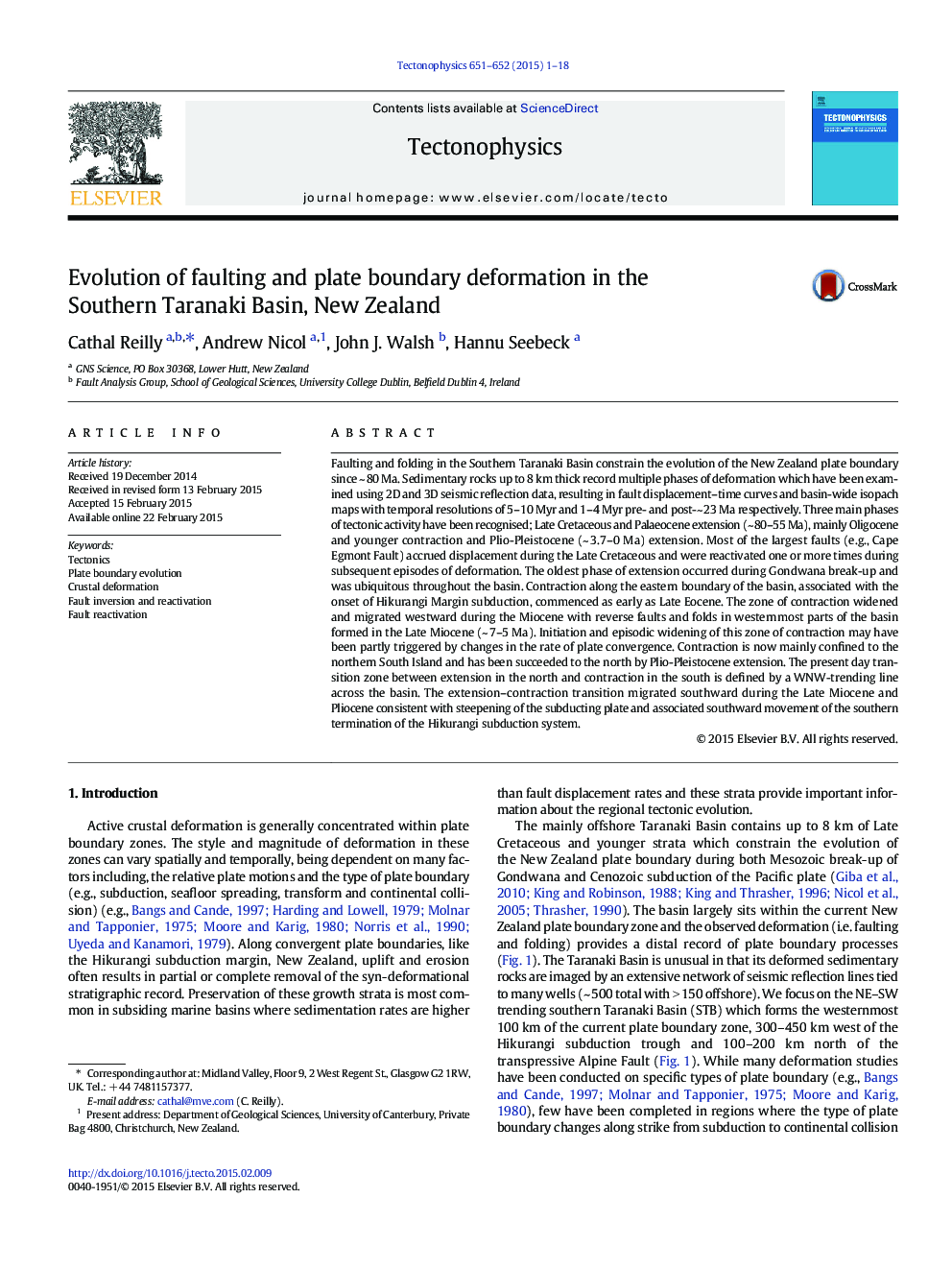| کد مقاله | کد نشریه | سال انتشار | مقاله انگلیسی | نسخه تمام متن |
|---|---|---|---|---|
| 4691621 | 1636743 | 2015 | 18 صفحه PDF | دانلود رایگان |
• Full horizon and fault interpretation of all Southern Taranaki Basin seismic data
• Detailed timing of fault activity throughout basin with displacement analysis
• Complete temporal record of deformation associated with plate boundary processes
• L. Eocene–E. Oligocene onset of subduction-related contraction, migrated westward
• Present day normal and reverse faulting in the Southern Taranaki Basin since Pliocene
Faulting and folding in the Southern Taranaki Basin constrain the evolution of the New Zealand plate boundary since ~ 80 Ma. Sedimentary rocks up to 8 km thick record multiple phases of deformation which have been examined using 2D and 3D seismic reflection data, resulting in fault displacement–time curves and basin-wide isopach maps with temporal resolutions of 5–10 Myr and 1–4 Myr pre- and post-~ 23 Ma respectively. Three main phases of tectonic activity have been recognised; Late Cretaceous and Palaeocene extension (~ 80–55 Ma), mainly Oligocene and younger contraction and Plio-Pleistocene (~ 3.7–0 Ma) extension. Most of the largest faults (e.g., Cape Egmont Fault) accrued displacement during the Late Cretaceous and were reactivated one or more times during subsequent episodes of deformation. The oldest phase of extension occurred during Gondwana break-up and was ubiquitous throughout the basin. Contraction along the eastern boundary of the basin, associated with the onset of Hikurangi Margin subduction, commenced as early as Late Eocene. The zone of contraction widened and migrated westward during the Miocene with reverse faults and folds in westernmost parts of the basin formed in the Late Miocene (~ 7–5 Ma). Initiation and episodic widening of this zone of contraction may have been partly triggered by changes in the rate of plate convergence. Contraction is now mainly confined to the northern South Island and has been succeeded to the north by Plio-Pleistocene extension. The present day transition zone between extension in the north and contraction in the south is defined by a WNW-trending line across the basin. The extension–contraction transition migrated southward during the Late Miocene and Pliocene consistent with steepening of the subducting plate and associated southward movement of the southern termination of the Hikurangi subduction system.
Journal: Tectonophysics - Volumes 651–652, 31 May 2015, Pages 1–18
